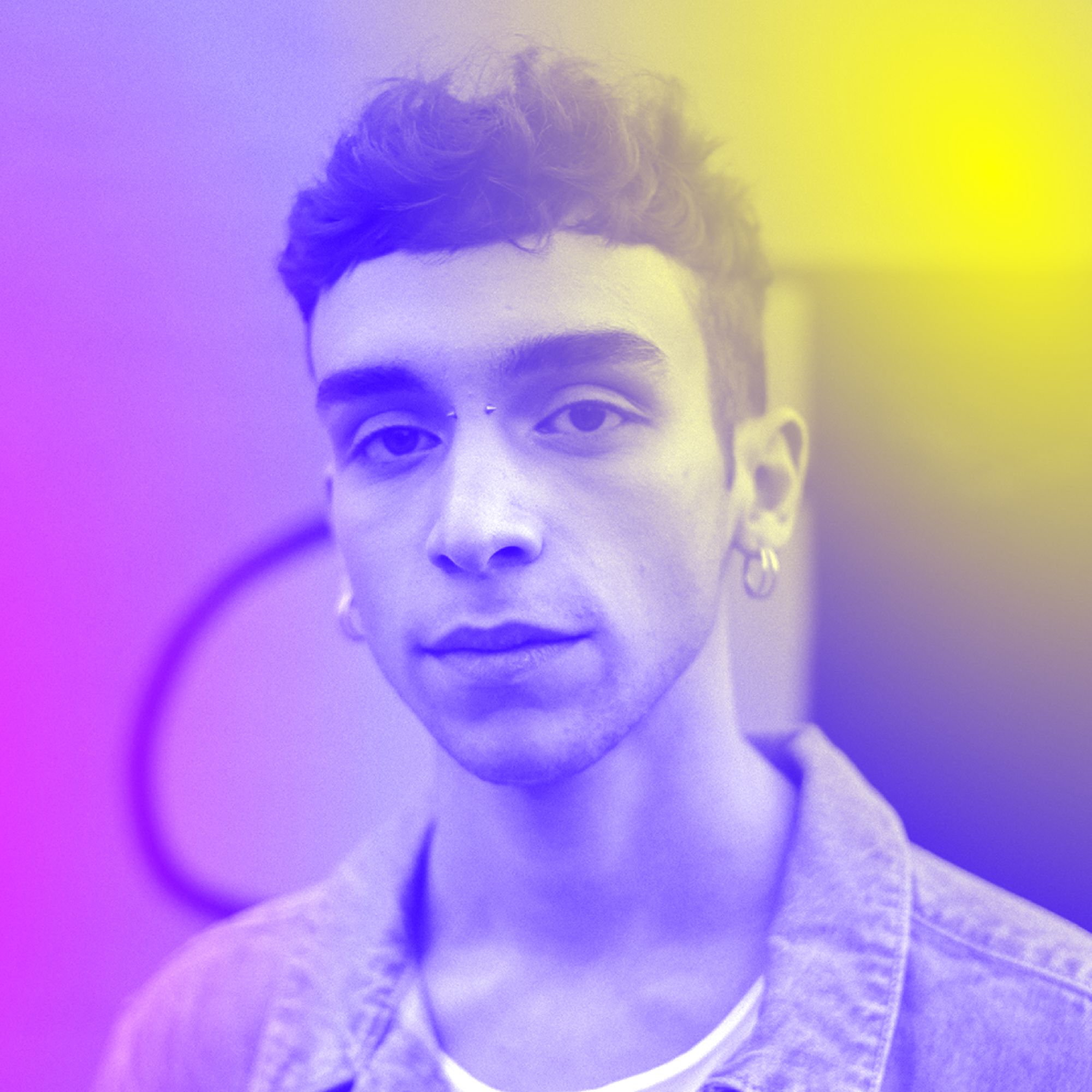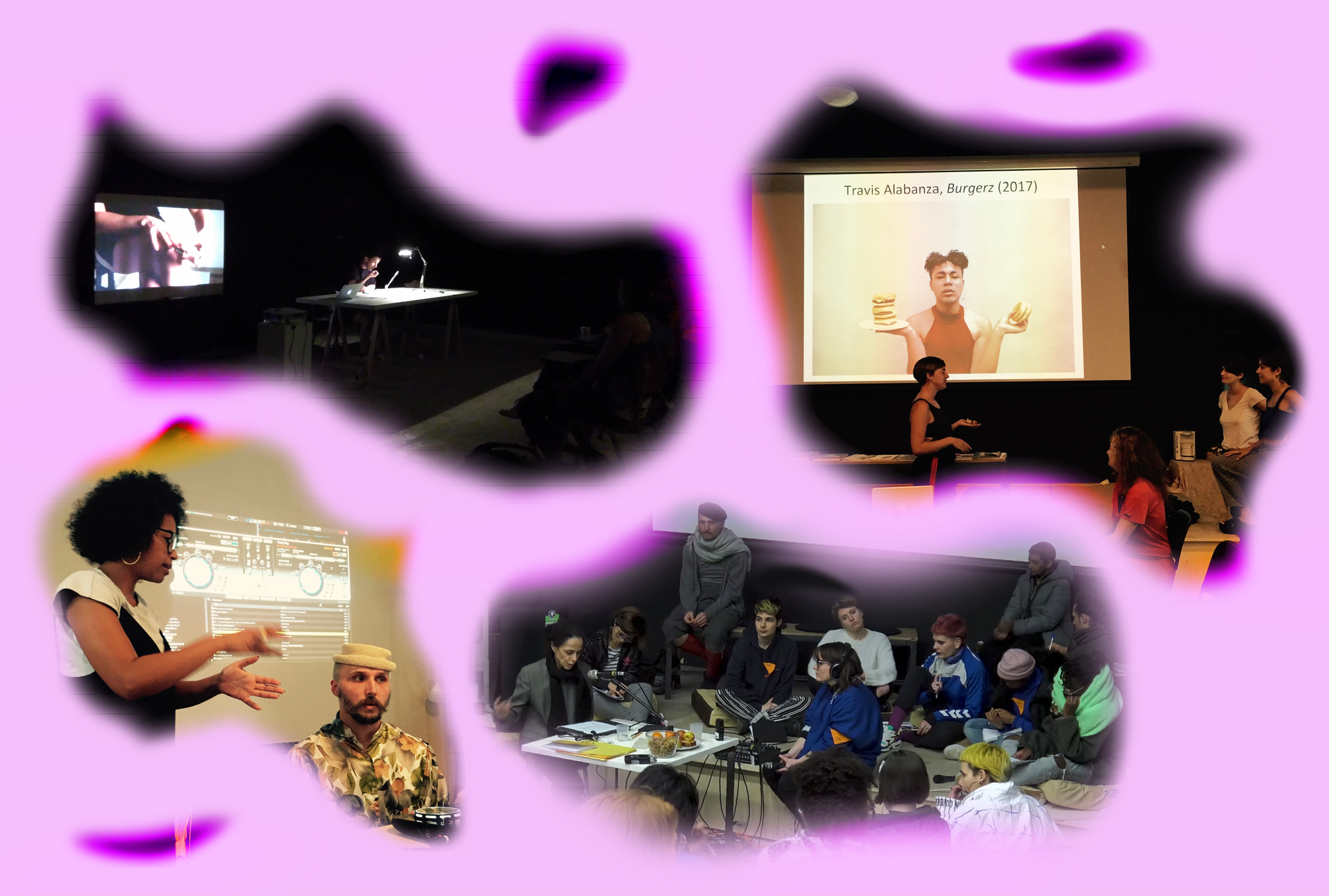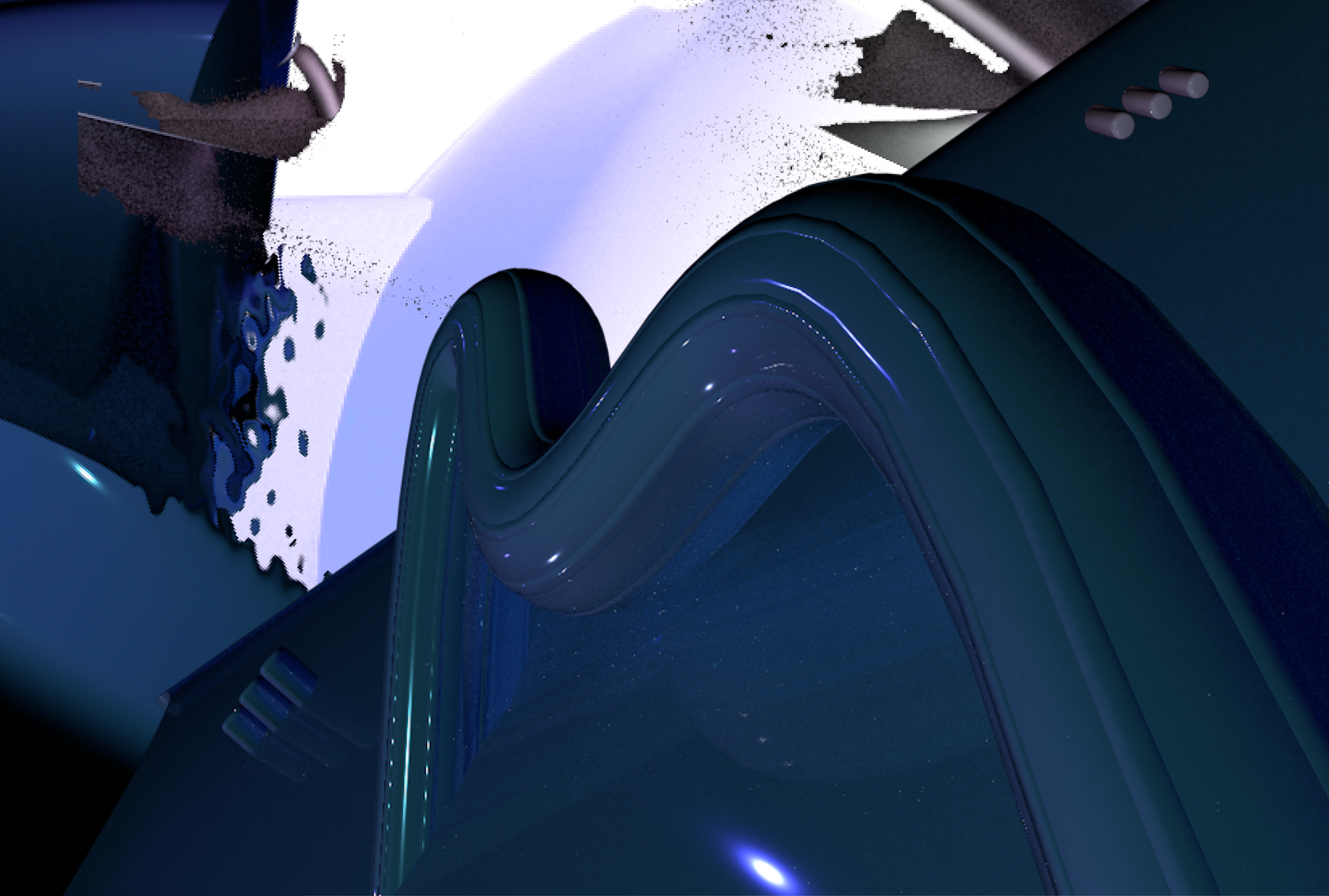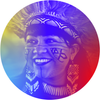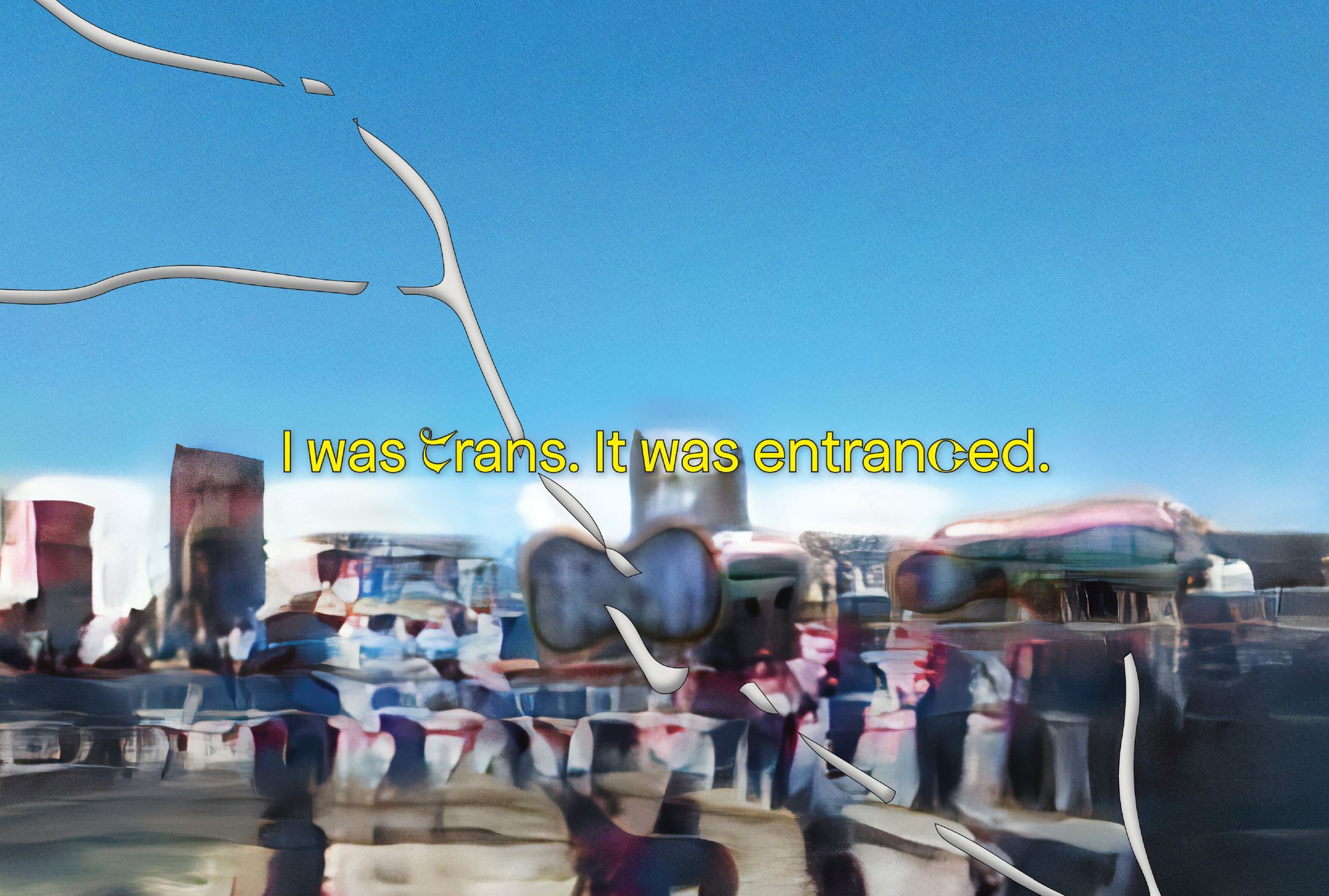
It’s almost lunchtime in Canada, and the transdisciplinary designer and researcher Lucas LaRochelle just got off work. I’m sitting in my home in Italy, basking in the soft sunset light of a late summer evening. Between time zones and geographies, our Zoom conversation begins with the new normal of COVID-19 life, and design education. As soon as we start discussing Lucas’s projects, we enter a mesmerizing time-warp of emotions and ideas.
Lucas’s transdisciplinary practice is a dense journey that interweaves queer and trans digital cultures, community-based archiving, and co-creative media. In 2017, they launched Queering the Map, a community-based online collaborative platform that enables users to anonymously archive LGBTQ2IA+ experiences in connection with physical space. I spent hours browsing through its archive, reading stories of queer life. Some of them resembled my own experiences of joy, fear, or trauma, while others seemed to come from entirely different places. This archive of stories evolved into QT.bot, an artificial intelligence trained on the data from Queering the Map that generates speculative queer and trans futures and the environments in which they occur. QT.bot’s first output, Sitting here with you in the future, is a video and series of prints that explore these possible worlds.
Riccardo Righi: Queering the Map (QTM) originated from your own personal experiences, memories and feelings. Was this the case for QT.bot as well?
Lucas LaRochelle: QT.bot is an expression of my relationship to QTM, a way of working through the immense amount of data housed on the platform—a critical response to the information overload. As the dataset of QTM grows, the question of what can be ascertained from the data becomes more complex, by virtue of its volume.
I don’t see QTM as a research project in a traditional sense because the idea was never to make any concrete claims about “this is how queer spaces come to be, this is how we can build for queer spaces.” It’s exciting that these kinds of questions have emerged from it but this mode of logic-making is actually antithetical to the dis-organisational structure of QTM as an archive. As more people have begun to study QTM, I have developed a feeling of apprehension towards making definitive claims about what we might learn from it. Often, I’m asked, “What do we learn from looking at QTM? What are the take-aways about LGBTQ2IA+ life that you can tell us from QTM?” My answer to that is, “There are 126,000 submissions in this database—126,000 different ways in which this question can be answered.”
And how did these considerations evolve into QT.bot?
As I was exploring different tools to work with artificial intelligence and machine learning, in an artistic context, I found that similar practices of logic-making, or sense-making, are inherent to these computational processes. An easy thing to do would have been to throw an algorithm at QTM and ask it to reveal a concrete truth about the data. It would have distilled all of the distinct and multivalent voices into a singular story about QTM. How totally horrifying would that have been?
How did you translate these ideas into the technical work behind QT.bot?
QT.bot’s digital (inter)subjectivity is constructed from an implementation of the Open AI GPT-2 text generation model trained on over 82,000 text entries from QTM, and a StyleGAN (implemented by machine learning engineer Mattie Tesfaldet) trained on scraped Google Street View imagery of the tagged coordinates on QTM.
QT.bot generates an infinite amount of speculative worlds and I see myself as their collaborator, curating the stories and images QT.bot creates and that straddle the line between legibility and opacity, between logic and confusion. In this context, my work is to set up a structure of feeling.[2] I don’t think I am able to describe exactly what the feelings are though, I am making myself sensitive to the profound affective “truths” contained in the otherwise fantastical nature of their stories.
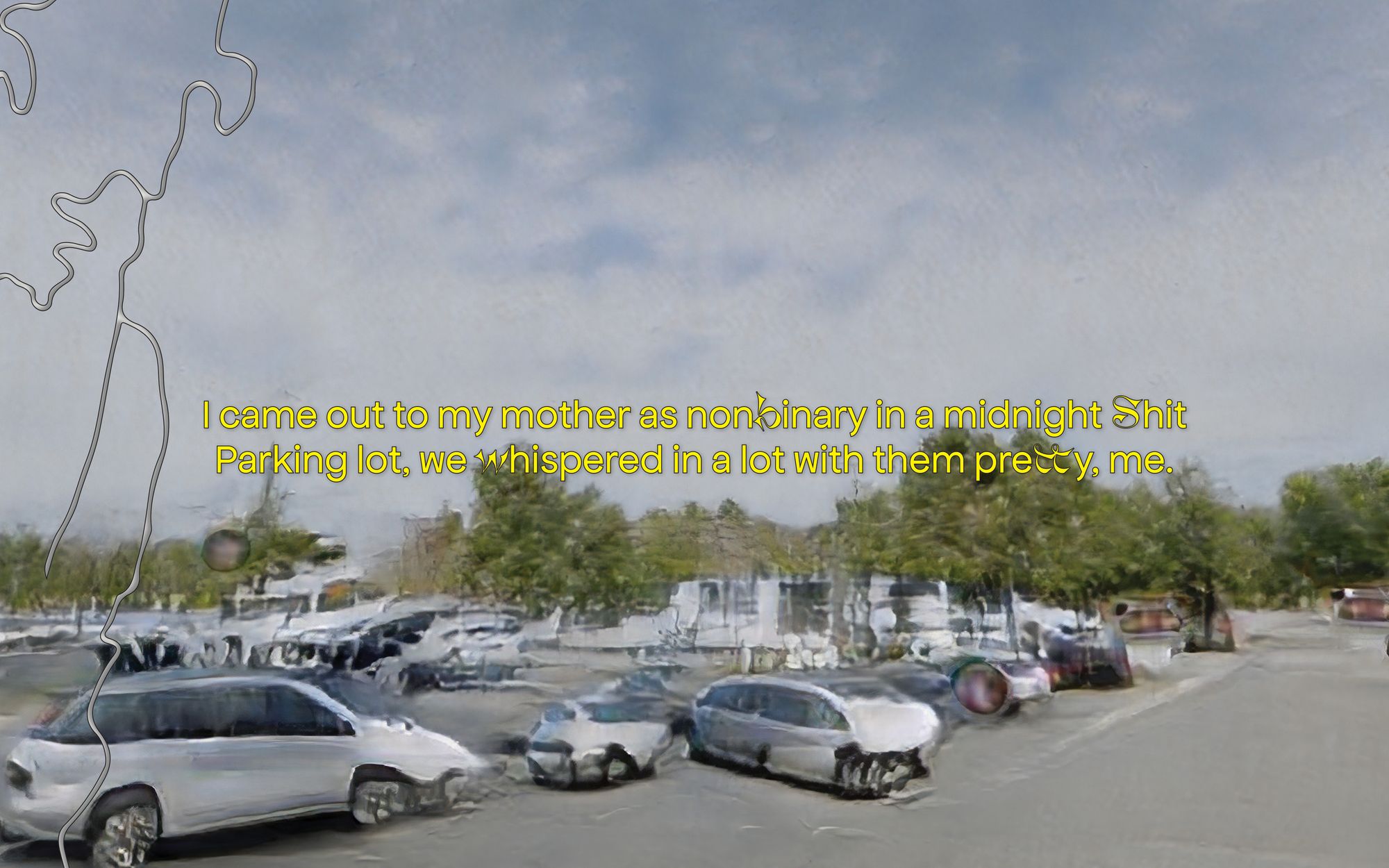
The content that QT.bot generates echoes the experience of moderating QTM. The moderation queue is an overwhelming waterfall of information as individual submissions blur into hybrid narratives as they are uploaded into the fleshy database of my mind.zip.
This experience of overwhelm is also echoed on the front-end of QTM. You click through all of these stories from so many different people who are all across the globe and, all at once, they mix together. The experience of navigating the map is cacophonous, atemporal, and staggering. It is anti-geographical to a certain extent—posts in the wrong location, intentionally or unintentionally. Pins are placed in the grey non-spaces above and below the rendering of the map and in the ocean. Many submissions are speculative in nature—musing on the possibilities of gay and trans penguins or polar bears.
The stories that QT.bot is producing reflect the hyper-emotional, hyper-vulnerable expression that happens on QTM. QT.bot folds these narratives and expressions into a deeper relation with the medium through which they are being voiced, which is the digital space of hyper-information.
How does QT.bot change the way you look at QTM?
I often describe QT.bot as the rogue offspring of QTM. QTM is the earnest parent and QT.bot the disobedient child running amok, throwing a mirror back at QTM. Though it is not a singular mirror but a thousand shards, a room of broken mirrors.
As QTM evolves, I’m thinking less about questions of physical queer and trans space, and more about queer and trans space in a digital context—questions of data sovereignty, queer approaches to data analysis, and the like. QT.bot is a tool through which to explore these questions while maintaining the sovereignty of QTM as a platform.
How do you understand the act of “queering”? Particularly, the “queering” of technology?
Following queer, feminist and critical race scholar, Sara Ahmed, I understand queerness as a phenomenological orientation in the world. That is to say, there is a materiality, and in turn, relationality, to the experience of “queerness.” Queer bodies experience the contours of the world in such particular ways, especially as they intersect with other axes in the matrix of domination.
“There is an urgent need to explore machine learning and artificial intelligence for something ‘other than,’ to ‘break’ it from the inside, to think about alternatives for how these technologies might be used ethically. The misuse of digital tools has deep material impacts on the bodies—human and non-human—that they seek to identify and control. ”
One can “feel” the dominant apparatus of power through a queer/trans experience of the world. Artificial intelligence has primarily been used as a machine to make sense of, to categorize, to sort, and this is felt in an incredibly embodied way. It’s terrifying to think of this reductionist logic being used at a mass scale, being used to, literally, “identify.” In 2018, Michal Kosinski, a researcher of organizational behaviour and artificial intelligence, claimed to have developed an algorithm that could effectively determine someone’s sexual orientation. He was then in conversation with the Russian government on how to employ this algorithm. Of course, the validity of this “gaydar” algorithm has since been completely debunked. However, the logic of capture that is embedded in artificial intelligence systems through biased design can have and has had terrible consequences.
There is an urgent need to explore machine learning and artificial intelligence for something “other than,” to “break” it from the inside, to think about alternatives for how these technologies might be used ethically. The misuse of digital tools has deep material impacts on the bodies—human and non-human—that they seek to identify and control.
I think in the LGBTQ2IA+ community we tend to reject fixed definitions, trying to question them constantly. How does this work with technology?
QTM deploys the concept of “queer/ing,” in two of its possible uses: to “denote” non-normative gender and sexuality, and, in its more methodological context, to “disrupt,” to “break,” to “question,” to “destroy” the map itself. To “undo” the map is one of the central gestures of QTM. Specifically, to undo the “sanctity” or the objectivity of a map. Undoing this map by defacing it, by adding things that otherwise would or should not be there—to expose the map as nothing more than a biased image, an image of colonial power and architecture. That was an initial gesture of QTM, which as the platform grows, has expanded into the process of “queering” the archive. The disorganized and anonymous nature of the platform works to “break,” or “undo,” or “queer” traditional modes of archiving.

So what does it imply to act in a “queer” manner in relation to the archive?
Insofar as it is troubling the idea of truth that is so valued in the archive. Which, I believe, feels like an important gesture given that queer and trans life continues to be cast as inauthentic and untrue. What would be the value in maintaining these systems of exclusion? There is no way to confirm or deny the truth of any of the stories on QTM. However, we are rather confident as the readers and writers of those stories to assume that they are true, or at least true enough. The point is not to create a verifiable, peer-reviewed archive but rather an archive of feelings.[3]
“I see QT.bot [as] a device for ‘fabulating’ in the archive, a way of refusing to rely on only what is officially documented as a way of making a history.”
In what way does that relate to the “queerness” of QT.bot?
QT.bot puts into overdrive these questions of authenticity in the archive, or what it means to speculate in the archive(s). One of the thinkers that inspires me in her way of working through this is Saidiya Hartman, who deploys “critical fabulation” as a way of filling in the blanks of an archive.[4] In her work she focuses on the absences in the archive of the experiences of Black women in the trans-Atlantic slave trade. “Critical fabulation” is a way for her to fill in the blanks, to build bridges between pieces of disparate information that for reasons of historical erasure do not exist in any official capacity.
Hartman’s context and mine are very different but I see QT.bot in a similar way: a device for “fabulating” in the archive, a way of refusing to rely on only what is officially documented as a way of making a history. Addressing the lack of queer and trans archives and stories in official archives and popular media, QT.bot becomes a collaborator with whom to dream about, with, and through our past. Not dreaming past and future as a linear temporality but dreaming of other worlds that are happening in parallel to the world we are currently living in.
Searching for stories that seem somewhat possible and also completely absurd— subjectivity, temporality and geography are fracturing; opening up new worlds within the world. It feels like the world is happening in 360 degrees, in 500 different dimensions, all at once.
I see QT.bot as having moved away from physical spaces. For me it goes into that realm of memory, particularly digital memory, which sometimes is not as coherent as our physical one. What are the implications of using these technologies in creating queer memories/futures?
I love what you’re saying about the differences between physical and digital memory. When we look back at something, it’s always a fabrication/fabulation. It’s a piecing together of the fragments we can bear to recall.
We might think of queer lives as those who lack a roadmap, following the wayward flows of a life living through relation, as the roadmap itself. Queer life, which might be true of all life on the Internet and in the information age, is about constructing oneself from all of these digital imprints in relation to one’s immediate physical community. So QT.bot is a way of articulating these modes of post-individual, and relational identity production.
“The ‘correct’ or 'straight’ way of using artificial intelligence in this context would be to have QT.bot write stories so convincing that they are indistinguishable from the stories on QTM. However, I’m more attracted by those that fail, and the feelings produced through this failure—which are, arguably, more intense than the feelings produced by stories that pass as ‘truthful’ or ‘logical.’”
Could you explain a bit more specifically about how you work with QT.bot. How do you select stories?
To begin, I set the amount of stories that QT.bot will produce which is based on the number of characters output. Once I have the output text, I use it in two ways. I look for the stories that don’t “pass”—where it’s clear that it was not written by a human, evidently produced by a machine. The “correct” or “straight” way of using artificial intelligence in this context would be to have QT.bot write stories so convincing that they are indistinguishable from the stories on QTM. However, I’m more attracted by those that fail, and the feelings produced through this failure—which are, arguably, more intense than the feelings produced by stories that pass as “truthful” or “logical.” In curating, I look for these moments of failure, impossibility, or incommensurability in the story. Reading these stories is like being in a time warp, you lose your balance. Spinning around in this time warp is deeply pleasurable and fosters a queer relationship to time.
The second way in which I select stories is through a reading process that mimics the process of moderating the submissions to QTM. I read through hundreds and hundreds of stories, very quickly, and with great precision. The ones in which I can’t place exactly why they strike me, that produce a yet unnameable affect are those that I am drawn towards most.
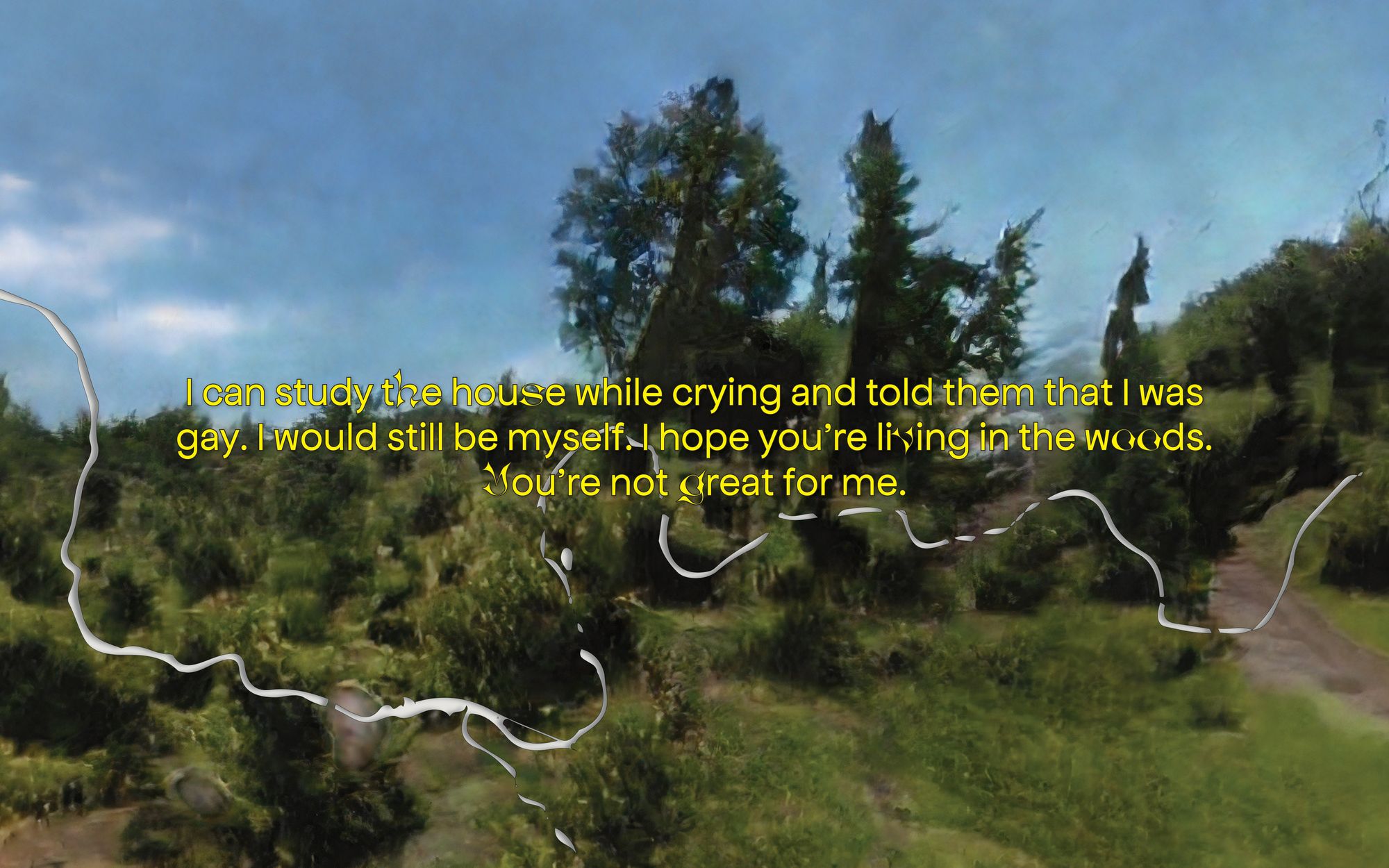
How do you think design can participate in queer theory, both in your practice and in general?
I see myself as a mediator between academic queer/trans theory and the real world needs/ideas/dreams of my communities. There are beautiful ideas written by brilliant people that are institutionalised within a system that is extremely violent and exclusionary. Even despite the fact that those ideas are in many ways drawn from people who are outside of the institution. One of the major tensions in my practice is that while I am trained as a designer, I am obsessed with critical theory—which I ultimately view as a kind of poetry or literature. My primary mechanism as a designer is to negotiate those ideas in a public and visual form. I use design as a medium to process these ideas that often only exist in the realm of theory, in a textual format, and I try to translate them into things that are accessible or experiential to a wider audience.
That is another gesture of QTM: thinking about experience as a form of theory making. The stories on QTM are as important, if not more important, as pieces of theory than as anything written by... insert famous queer theorist name here… That’s how I see my public facing role as a designer: a translator and a mediator of ideas into infrastructures or interfaces. A gesture that can be inhabited by people other than myself.
On a personal level, design is my emotional processing tool. My questions, my hopes, and my fears around artificial intelligence, queer and trans and Black and Brown and Asian and Indigenous futurity, can all be atomized through design. I move in-between a thought/emotion-based practice and a visual practice, in constant negotiation with one another.
In the report of the workshop QTM x Échelles [5], you describe your temporary occupations of spaces on the second day as “political actions of radical softness.” How do you define this “radical softness”? And how does it relate to your approach to queer histories or places?
The first thing that comes to mind is the way that I think of queerness as a relational identity—that we become queer in our relationship to others and to our environments. Queerness is best understood as a communal identity and as a political affiliation. I think of relationality with my community, with my kin, as shifting, soft. It’s not a hard line in the sand but rather something that is yielding and dancing, in order to move further. I think of queerness as an amorphous blob, it negotiates space but doesn’t necessarily aim to permanently claim it. It moves around, taking up smaller or larger spaces when it needs to, but it doesn’t have to always be monumental. We negotiate our identities in various contexts differently, making ourselves bigger or smaller, based on the situation.
“We practice activism when we care for one another, we practice activism when we share intimate parts of ourselves with one another. Activism is not always a process of antagonism […]. Modes of soft activism, modes of sharing, and being vulnerable also have immense power.”
In that report you referenced, I was probably referring to the power of vulnerability as an act of resistance. That activism is not necessarily the one with a capital “A” all the time. We practice activism when we care for one another, we practice activism when we share intimate parts of ourselves with one another. Activism is not always a process of antagonism, although processes of antagonistic activism are incredibly important. Modes of soft activism, modes of sharing, and being vulnerable also have immense power.
In your text on your workshop Cruising The Map in FAKE IT! FAKE THEM! FAKE YOU! FAKE US!, you introduce the work of the workshop participants with these questions: “How far can we travel together when we are unsure of the direction? Where does cruising take us?” Do you see cruising as a method?
That makes me think again about the idea of “softness.” Again, it comes to a question of relations: what does it mean to trust in a process of relation, especially when we’re not sure of where that relation might lead us? We can’t define what a relation to a person, object, institution, or environment, will become, and yet, we make decisions to enter modes of relation all the time. Cruising, as a socio-sexual practice, is a hyper-relational dance. It often occurs without language and unfolds through gesture, proximity, and is structured through a particular environment. In cruising, there is an immense amount of trust in the unknown, which when abstracted as a larger methodology of care, can move us very far and in directions that we can’t plan for, but sense we might need.
This is also in response to the pseudoscience of “design thinking,” the idea that you reach the solution only if you follow a particular trajectory—which of course we know is not true. So, what does it mean to enter a co-designed methodology? Or, if cruising is our methodology, just being together, communing together, and moving from that space? Cruising is the joy of being with people, who minutes ago were strangers, who open the possibility for an incredible relational dance. You have no idea where it will take you, but it animates the power of being in the world together.
Would this bring us back to queerness as well?
Yes, it does—cruising is a relational experience, as is queerness. It leads me to think of the problems of capitalism’s co-opting of queer and trans life and the violence of framing it as an individualist identity that can be bought and sold. When we think of queerness as a practice, as a relational dance, we require one another because we cannot singularly inhabit queerness. We are producing it in different ways, in different volumes. To consider queerness as a methodology might allow us to have the fluidity that we desire when we begin to understand ourselves, our communities, and our world, through a lens of constant relational flow.
Glissant, É, (1997). Poetics of Relation. Ann Arbor: University of Michigan Press. ↩︎
Williams, R. (1977). Marxism and literature. Oxford: Oxford University Press. ↩︎
Cvetkovich, A. (2003). An Archive of Feelings : Trauma, Sexuality, and Lesbian Public Cultures (Ser. Series q). Duke University Press. ↩︎
Hartman, S. (2008). Venus in Two Acts. Small Axe 12(2), 1-14. https://www.muse.jhu.edu/article/241115. ↩︎
In Broomberg, M. E., Henry, M. (eds) Échelles 02. Spolia, 2019. ↩︎
Lucas LaRochelle (they/them) is a transdisciplinary designer and researcher. Their practice explores queer and trans digital cultures, community-based archiving and co-creative media.
Riccardo Righi (he/him) is an Italian designer and researcher. His practice explores topics of collective identity, language and queerness.
This interview was originally published in A Line Which Forms a Volume 4, a critical reader and symposium of graphic design-led research that is written, edited, designed and published annually by participants of the MA Graphic Media Design course at London College of Communication.
Title image: Lucas LaRochelle, Sitting here with you in the future, 2020.
Many thanks to Corin Eliot Gisel for helping with the editing of this interview, and turning it into something worth reading. My deepest thanks to rudi aker, who helped with the final edits, enabling our ideas to shine bright like a diamond.

